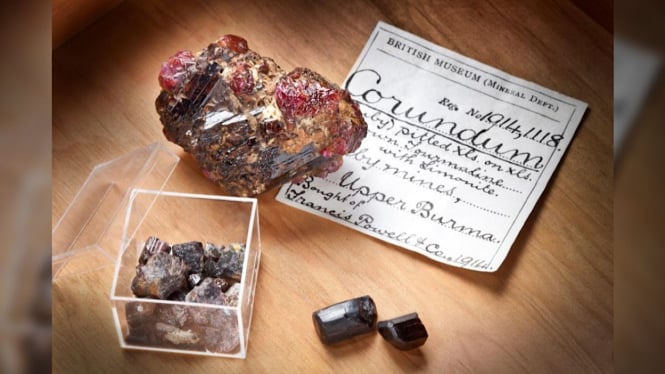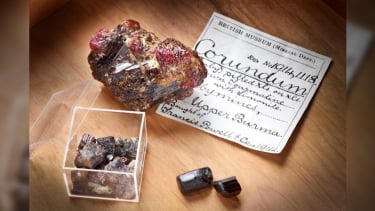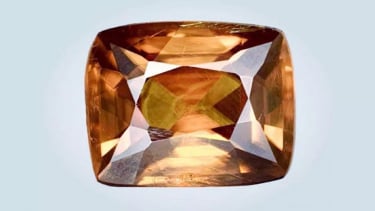All about the Rarest Mineral on Earth
- The Natural History Museum
VIVA – Minerals are scattered on our planet, from glittering specks in gravel or sand to hidden gems. According to the U.S. Geological Society, minerals are natural elements or compounds that are inorganic, meaning they do not contain carbon.
Each type of mineral shows regularity in its internal structure and has an unusual chemical makeup. The form of mineral crystals, as well as other physical properties, can vary.
The rarest mineral on Earth is kyawthuite. Only one crystal, found in the Mogok region of Myanmar, is known to exist. Caltech’s mineral database describes it as a small deep orange gemstone that the International Mineralogical Association officially recognized in 2015.
Mineral kyawthuite
- NHM
Unfortunately, only a few people know about Kyawthuite. So, let’s move on to the second-rarest mineral in existence, which is painite, which appears as deep red hexagonal crystals (though there are some pinkish exceptions). Though painite is now more easily found than it used to be, this mineral is still rare, and its chemical structure makes it something of a scientific enigma.
In 1952, the English gem collector and dealer Arthur Pain acquired two crimson crystals in Myanmar, according to George Rossman, a professor of mineralogy at CalTech, who has been researching painite since the 1980s and maintains an extensive database of all the samples he has analyzed microscopically.
Pain thought the crystal was a ruby that was famous in the area. But unbeknownst to him, the crystal was much rarer, as quoted from the Live Science site on Tuesday, January 3, 2022.
Painite is sometimes unearthed alongside rubies and other gemstones. That explains why Pain assumed the crystal was a ruby when, according to Rossman, he donated it to the British Museum in 1954 for further study.
Other samples from Myanmar appeared in 1979 and 2001. The three crystals are the only known specimens of painite in the world. The first painite crystal found, known as painite #1, was later analyzed by Rossman. His latest painite study was published in Mineralogy Magazine in 2018.
"I conducted a study of the first sample. The results became the standard used to confirm further painite discoveries," Rossman says.
It was through this research that Rossman determined what elements makeup painite. Using infrared spectroscopy, infrared radiation is used to identify elements based on how they absorb, reflect, and emit that light.
With infrared spectroscopy, infrared radiation is used to identify elements based on how they absorb, reflect, and emit that light. With Raman spectroscopy, a laser is used to scatter visible, infrared, or ultraviolet light, which makes the molecules give off unique vibrations that make them identifiable.
Rossman also found there was an error in the chemical makeup originally determined by scientists at the British Museum. While they had correctly identified aluminum, boron, calcium, and oxygen, the element zirconium was missing. Another thing Rossman found out was what gave painite its reddish hue; It has trace amounts of vanadium and chromium that might make it deceptively appear like a ruby.



























